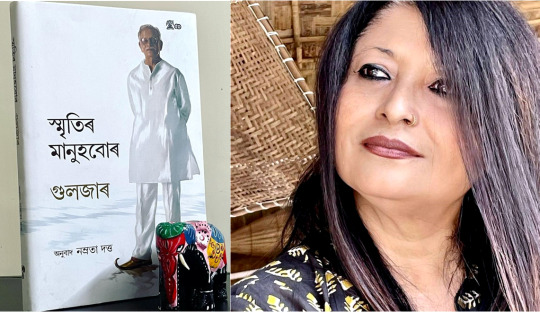#CulturalTranslation
Explore tagged Tumblr posts
Text
How Multilingual Websites Drive Global Growth

Having a multilingual website is no longer a luxury—it's a necessity. With businesses aiming to reach a global audience, offering content in multiple languages can dramatically expand your customer base and improve engagement. One example is catering to Tamil-speaking users through professional English to Tamil translation, which not only makes your website accessible but also shows a commitment to inclusivity.
Why Multilingual Websites Matter
Imagine visiting a website with valuable information, but it’s in a language you don’t fully understand. Would you stay and try to figure it out, or would you leave to find one that speaks your language? Many customers choose the latter, which is why multilingual websites are crucial for retaining visitors.
For businesses looking to grow internationally, the ability to communicate effectively with diverse audiences can determine whether or not you gain their trust and business. If you’re targeting Tamil-speaking regions or communities, for instance, offering your content in Tamil shows that you value their culture and are willing to invest in their user experience.
Professional English to Tamil Translation
Creating a Tamil version of your website is more than just translating words from English to Tamil. It’s about ensuring that the message, tone, and intent of your content are conveyed accurately. Professional English to Tamil translation goes beyond literal translations—it requires knowledge of cultural nuances, regional differences, and local expressions.
For example, a promotional message that works in English may not have the same impact when directly translated into Tamil. A skilled translator will adapt the language to resonate with Tamil-speaking users, ensuring that the content feels natural and engaging. This is particularly important in industries such as e-commerce, healthcare, and education, where accuracy and clarity are vital.
Reaching Tamil-Speaking Markets

The Tamil-speaking population is significant, with over 75 million people worldwide, including large communities in India, Sri Lanka, Singapore, and Malaysia. By offering a Tamil version of your website, you can tap into this substantial market and build a stronger connection with these users.
Let’s consider an example. A global e-commerce platform looking to expand its operations in South India, where Tamil is widely spoken, would be wise to provide its website in Tamil. This not only makes the platform more accessible but also improves customer trust, leading to higher sales and user loyalty. After all, people are more likely to buy from businesses they can easily communicate with.
Enhancing User Experience and SEO
Another key benefit of multilingual websites is the improvement in user experience (UX). By offering a language option that users are comfortable with, you reduce friction and make it easier for them to navigate your site. In turn, this increases the likelihood of them staying longer, engaging with your content, and making purchases.
Multilingual websites can also boost your search engine optimisation (SEO) efforts. Search engines, such as Google, rank websites based on relevance and accessibility. By offering professionally translated content in Tamil, you can rank higher in searches conducted by Tamil-speaking users. This will drive more traffic to your site, improving visibility and market reach.
Building Trust with Tamil-Speaking Customers
Language is more than just a tool for communication—it’s a way of showing respect for your audience’s culture and identity. When you offer content in a user’s native language, they are more likely to trust your business and feel valued. This is especially true for Tamil-speaking communities, where cultural pride and language play an important role in everyday life.
Consider this: If your competitors are only offering content in English, but you’ve taken the extra step to provide a Tamil version, which business do you think Tamil-speaking users are more likely to choose? The answer is clear.
Future-Proofing Your Business
As the world becomes increasingly interconnected, businesses that embrace multilingual content will have a competitive advantage. Offering professional English to Tamil translation for your website isn’t just about meeting today’s needs—it’s about preparing for the future. Whether you’re expanding into new markets or seeking to strengthen your existing relationships with Tamil-speaking customers, having a well-translated website sets you up for long-term success.
Final Thoughts: Multilingual Websites as a Growth Strategy
In an age where every business is striving to stand out, multilingual websites offer a direct path to reaching diverse audiences and driving growth. By investing in professional English to Tamil translation, you can ensure that your business is accessible, trustworthy, and poised for success in the Tamil-speaking market.
#multilingualwebsite#globalgrowth#websitegrowth#digitalmarketing#professionaltranslation#englishtotamil#tamiltranslation#localisation#userexperience#uxdesign#seo#seostrategy#tamilmarket#culturaltranslation#inclusivity#tamilcustomers#multilingualcontent#customerengagement#websitetranslation
0 notes
Text
‘Gulzar is a part of my creative journey’-Namrata Datta

‘Growing up, Gulzar's lyrics were not just melodies to me; they were an intimate connection etched into my heart. As a singer, his compositions echoed through my childhood, and I found myself frequently humming his tunes. However, it wasn't just the music that captivated me; it was the enchantment woven into his words. This profound admiration for Gulzar's artistry sparked my interest in exploring his literary world, leading me to his book, 'Actually I met them.' To my astonishment, the journey took an unexpected turn when Sanjay Kumar Sanyal, a respected producer at Assam Publishing Company, presented me with a unique opportunity – to translate Gulzar's book into Assamese. The outcome was the Assamese rendition named 'Smritir Manuhbor.' The unveiling ceremony was graced by Mumbai's screenplay writer and director, Akashaditya Lama, alongside Kolkata's Ranjan Ghosh.’
Subham Panseshwar delved into a conversation with Namrata Datta about the book and her fascinating journey of creativity.
Q: How did your foray into writing begin?
Namrata: My journey into writing commenced during my school days, although initially, I never envisioned sharing my creations with the world. Singing occupied the forefront of my pursuits at that time. After marriage, a serendipitous encounter with La Rochefoucauld's 'Maxim' ignited an unplanned translation journey, fueled by a growing attachment to the book.
Fate intervened when I met Mr Jiten Deka, a senior publisher from Nalbari, who, after a brief discussion about books, requested a manuscript. His unwavering confidence became a pivotal catalyst. Completing the translation and handing it over to him, I soon discovered a report in the weekly newspaper Sadin, acknowledging the Assamese translation of 'Maxim' by me. It was a report by Bedabrat Bora. This unexpected recognition was a gratifying milestone.
Q: Tell us about your original writing.
Namrata: Inspired by Keshab Mahanta's Assamese lyrics, I harboured a fervent desire to unravel the untold stories behind those melodious tunes. Approaching him, he generously agreed to share his insights, culminating in the creation of 'Priyatama ei Jivan.' The book garnered positive feedback. Additionally, I authored a novel titled 'Kathopakatha,' derived from a distinctive Sunday program I conceptualized for a local FM channel. It was a fictional narrative in the form of conversation. Curated songs were inserted in between the conversation to enhance the situation and the mood of the narrative. Rituparna Das, a distinguished broadcaster and playwright-director, lauded the program's form and content. Later, I expanding this concept into a novel. Mr Das hosted the book release event. Pervez Ahmed, a filmmaker, and my school friend, even translated parts of the novel into an English film under the title ‘Cherrypicker’, now available on mxplayer.
Q: You wrote a book on Assamese Lyrics and the Freedom movement. Could you share more about this book?
Namrata: This book emerged from a research project that earned me a Senior Fellowship from the Indian Government's Department of Culture. Titled 'Reflection of India's Freedom Movement in Assamese Lyrics,' it proved to be a laborious yet profoundly fulfilling undertaking.
Q: What about your book on Modoji's Maan Ki Baat?
Namrata: The concept for this book originated from Sanjay Kumar Sanyal. We meticulously selected excerpts from Modiji's 'Mann Ki Baat,' focusing on social responsibility, community development, success stories, and innovative ideas evident in his speeches. I firmly believe these speeches unveil the leader's inner spirit, philosophy, and administrative approaches. The resulting book, titled 'Mor Priya Deshbashi,' is an essential read for those seeking to understand the man behind the Prime Minister.
Let me add one line more, I translated some poems by GulzarJi and those were published in book form by a prestigious publication house of Assam- Journal Emporium. The title of the book is ‘Gulzaror Kabita’ (Poems by Gulzar). That was probably first translation of Gulzar in Assamese book form.
Beyond her writing journey, her career has taken diverse paths, from being a casual announcer and news reader at Akaswani and Doordarshan to transitioning into private TV channels and FM radio. She has also worked in newspapers and magazines. Presently, her active involvement in social work. Her projects includes co-authoring a book with my husband - , titled 'Pati, Patni and Bandhabi (Man, woman and Girl Friend).' And household hacks for working women titled Gharuwa Diha (Household Tips).
#NamrataDatta#GulzarInAssamese#AssameseTranslation#LiteraryTranslation#GulzarBooks#AssameseLiterature#NamrataDattaWrites#CulturalTranslation#GulzarInNortheast#AssameseLanguage#LiteraryDiversity#TranslationMagic#GulzarLegacy#AssameseCulture
0 notes
Text
this is actually a very interesting topic in regards to translation and localisation!
for one thing, languages will never translate perfectly into another language; never. idioms, expressions, and little lagniappes that belong to one language will most likely be unable to be understood by another unless they are familiar with it
for example, when i watched an anime on dvd with both subs and dub on, the subs were slightly off from the dubbing. what i didn’t know is that the subs weren’t meant to be watched with the dub; it was for the original language! differences here and there in order to make what they’re saying sync with the mouths of the people talking.
so to sum up my point: the subs of most things are usually meant to directly translate the OG language, and when dubbing comes into play, can become a bit more difficult as localisation is required to make some sense of cultural and lingual norms that will not make sense to those not familiar with it
you are indeed correct about needing the proper subs, but it’s tied to a very long history of such a fascinating area of language!
youtube
some additional info: https://tvtropes.org/pmwiki/pmwiki.php/Main/SubbingVersusDubbing https://tvtropes.org/pmwiki/pmwiki.php/Main/Woolseyism https://tvtropes.org/pmwiki/pmwiki.php/Main/CulturalTranslation
sorry to have digressed a bit, but i’m just really into language
Pet peeve: when the subs and dubs don't match
45 notes
·
View notes